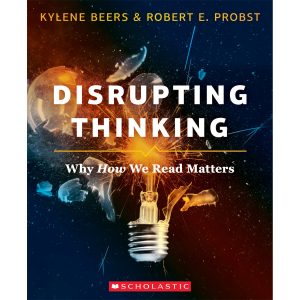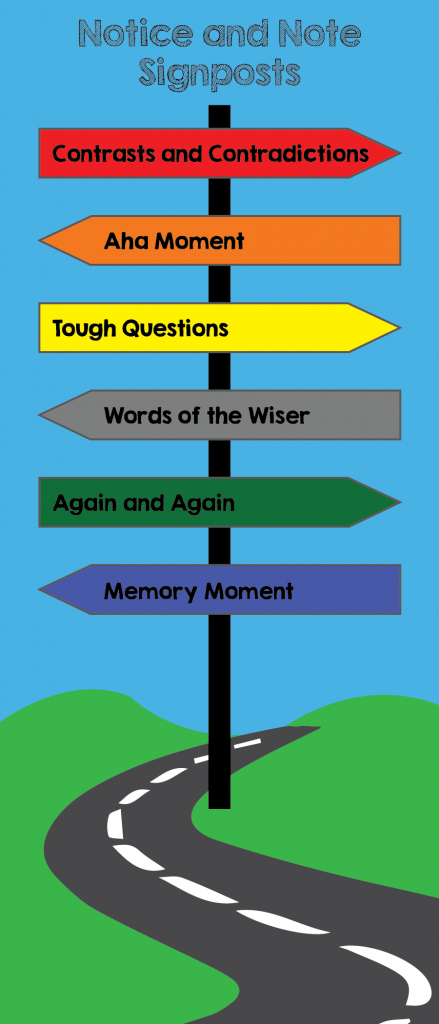 This fall, Gaynor faculty are implementing the ideas found in “Disrupting Thinking: Why How We Read Matters,” by Kylene Beers and Robert E. Probst. According to the authors, “We need to recognize that reading ought to change us. Reading ought to lead us to thinking that is disrupting, that shakes us up, that makes us wonder, that challenges us. Such thinking sets us on a path to change, if not the world, then at least ourselves.”
This fall, Gaynor faculty are implementing the ideas found in “Disrupting Thinking: Why How We Read Matters,” by Kylene Beers and Robert E. Probst. According to the authors, “We need to recognize that reading ought to change us. Reading ought to lead us to thinking that is disrupting, that shakes us up, that makes us wonder, that challenges us. Such thinking sets us on a path to change, if not the world, then at least ourselves.”
Over the summer, teachers read “Disrupting Thinking” and a companion text by the same authors, “Notice and Note: Strategies for Close Reading.” The teachers then came to Gaynor’s Summer Training Institute with questions, and spent time strategizing how these ideas could be implemented.
According to Writing Chair and Middle School Literacy Chair Jackie Glazer, “Our goal in adopting the Disrupting Thinking strategy for the Middle School is to create responsive readers who want to make connections to what they are reading.” Teachers want their students to ask “Why,” and “I wonder…” as they read.
At Gaynor, reading specialists and teachers use the Orton-Gillingham approach, morphology, and grammar to teach students the mechanics of reading. The Disrupting Thinking approach is another layer that moves students from the mechanical to a more holistic engagement with what they read.
Ms. Glazer emphasizes that using the Disrupting Thinking does not supersede the other approaches, but rather works in tandem with them. “In the Middle School, we try to merge OG, morphology, and grammar into the study of the book the students are reading. We are teaching both OG concepts and reading comprehension at the same time.” As students get older, especially students who may have difficulty reading, it can be challenging to find texts that are engaging and connect to their own experiences. “By pulling out vocabulary words in texts like ‘Of Mice and Men’ or Shakespeare, we can create multi-level lessons for students of all abilities,” says Ms. Glazer.
 One hallmark of the Disrupting Thinking approach is the use of signposts for readers. Ms. Glazer says, “There are six signposts. Teachers read the books beforehand and choose which signposts go with which book and which chapter. We don’t focus on all six at one time. Some books lend themselves to different signposts than others” See graphic at left for the six signposts.
One hallmark of the Disrupting Thinking approach is the use of signposts for readers. Ms. Glazer says, “There are six signposts. Teachers read the books beforehand and choose which signposts go with which book and which chapter. We don’t focus on all six at one time. Some books lend themselves to different signposts than others” See graphic at left for the six signposts.
Another notable framework in Disrupting Thinking is the concept of Book, Head, Heart (BHH). Ms. Glazer emphasizes how important this concept can be. “If we get our students to take anything away from this entire initiative it would be this strategy,” says Glazer. “Just learning to notice what the text says, what the author was trying to tell us, and then asking yourself, ‘What touched my heart about this?’ How can I connect to this piece of literature? How can I connect this to my life experience or to something else I’ve read or seen that resonates?’ Getting students to notice and note their connection to the text helps facilitate a love for reading. Students need to find that passion for themselves, but we can help to promote it through these techniques.”
These methods help students to read independently and critically, and allow them to make important connections both in fiction writing and in nonfiction texts as well. Gaynor’s Middle School history teachers are using the Book, Head, Heart method in their teaching of history texts. “The method helps foster empathy and allows students to better understand what people in our past have experienced,” says Ms. Glazer.
These skills are more important than ever, since sources of information are so varied and veracity is not guaranteed. According to Beers and Probst, these critical reading methods will help students weed out “fake news” from more unbiased reporting. “Responsible reading of the news is more critical now than ever before because so much of the news we all read comes to us from social media,” say the authors. Readers should not just assume that what they are reading is true. “… We must come to news ready to sort, to cull, to mull, to test, to confirm, to question, to challenge, to discard – and that’s in addition to just reading the content. … If fake news writers are counting on people to be dumb, then we must be smart. We must muster the stamina to be responsible.”
By using the techniques and strategies from Disrupting Thinking, Gaynor students will be prepared to take the reading skills they are learning and apply them throughout their academic careers and daily lives.
Ms. Glazer created a video presentation showing how the method is being used in the Blue Cluster. Check it out!
